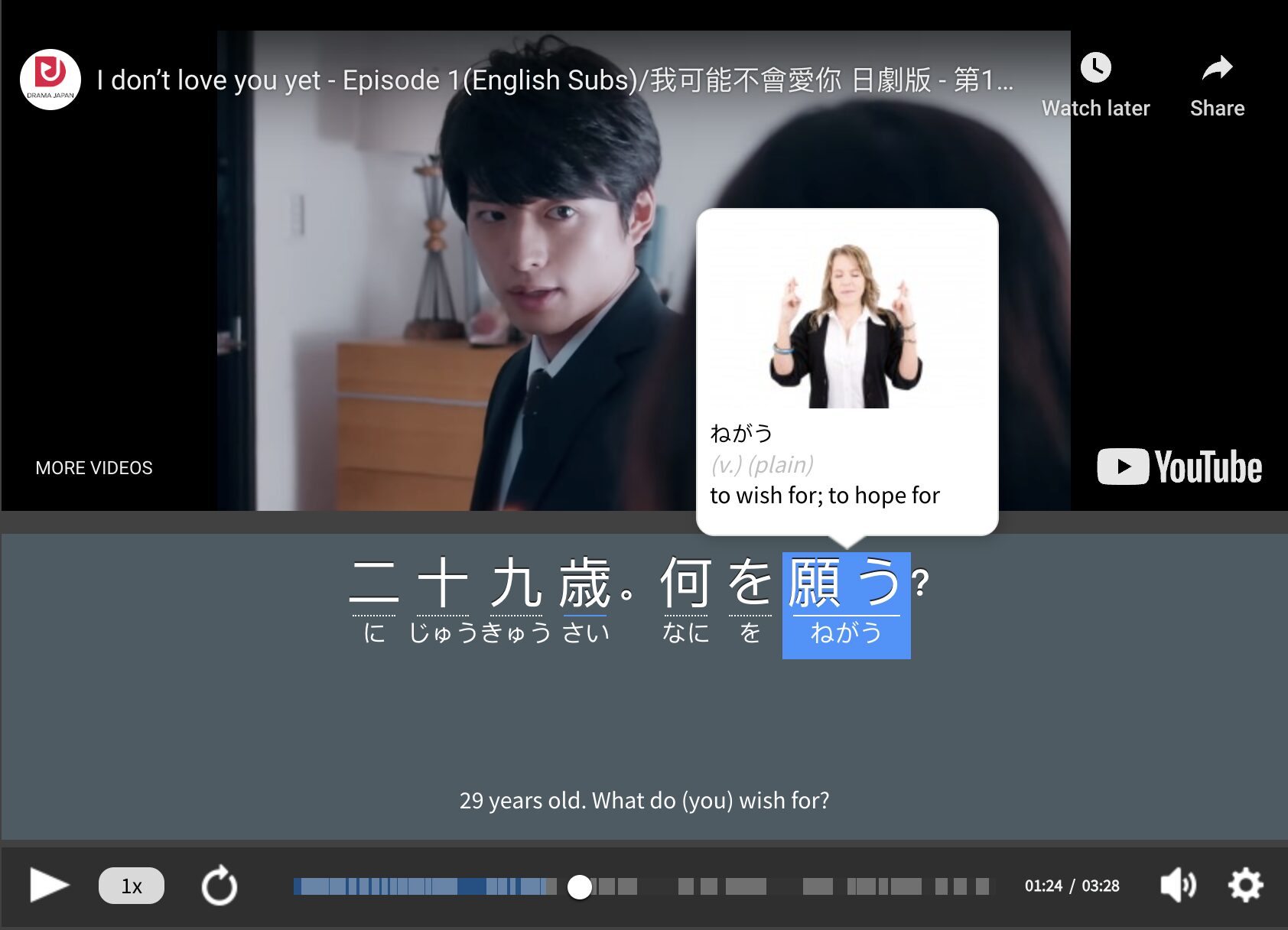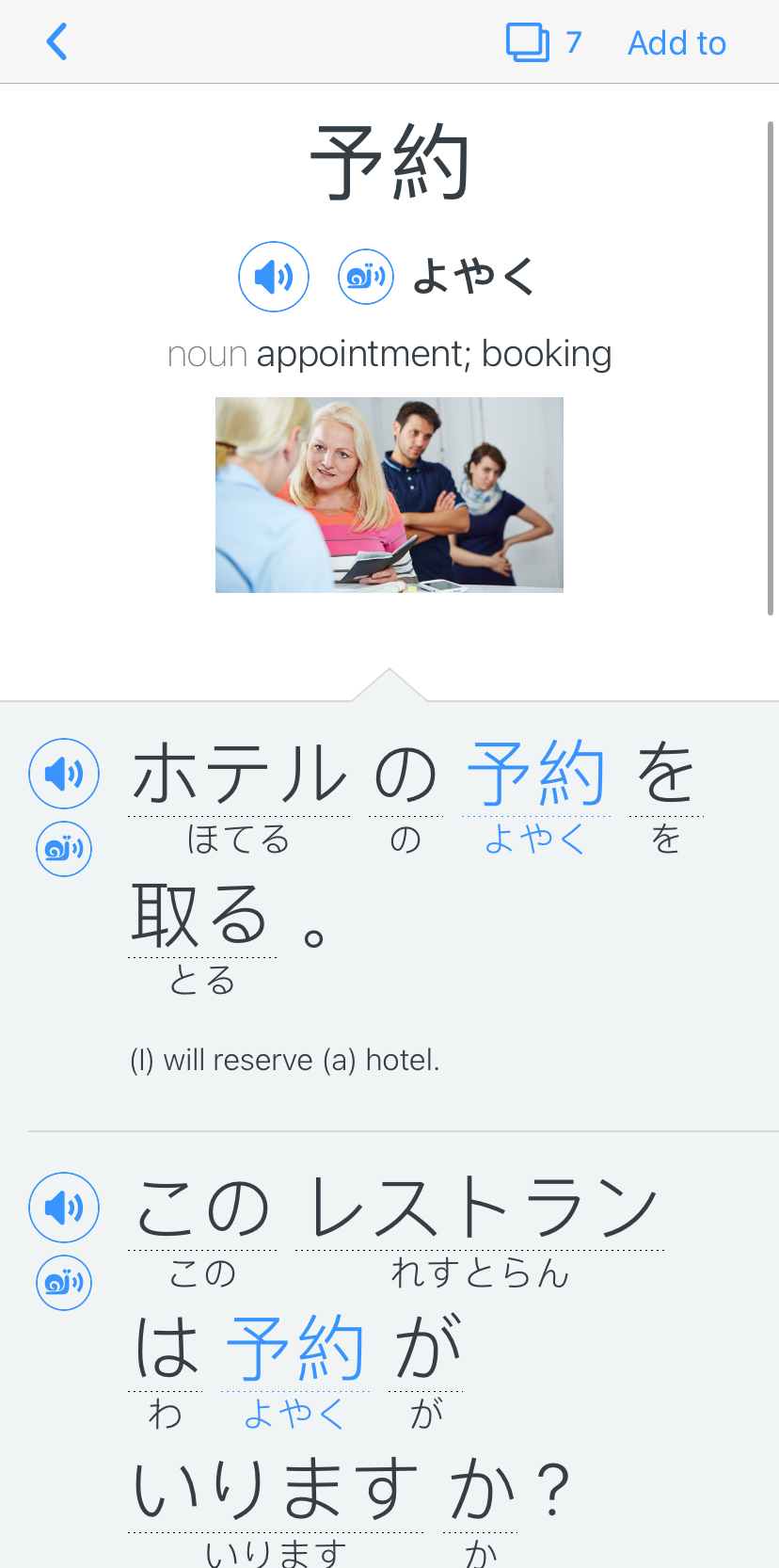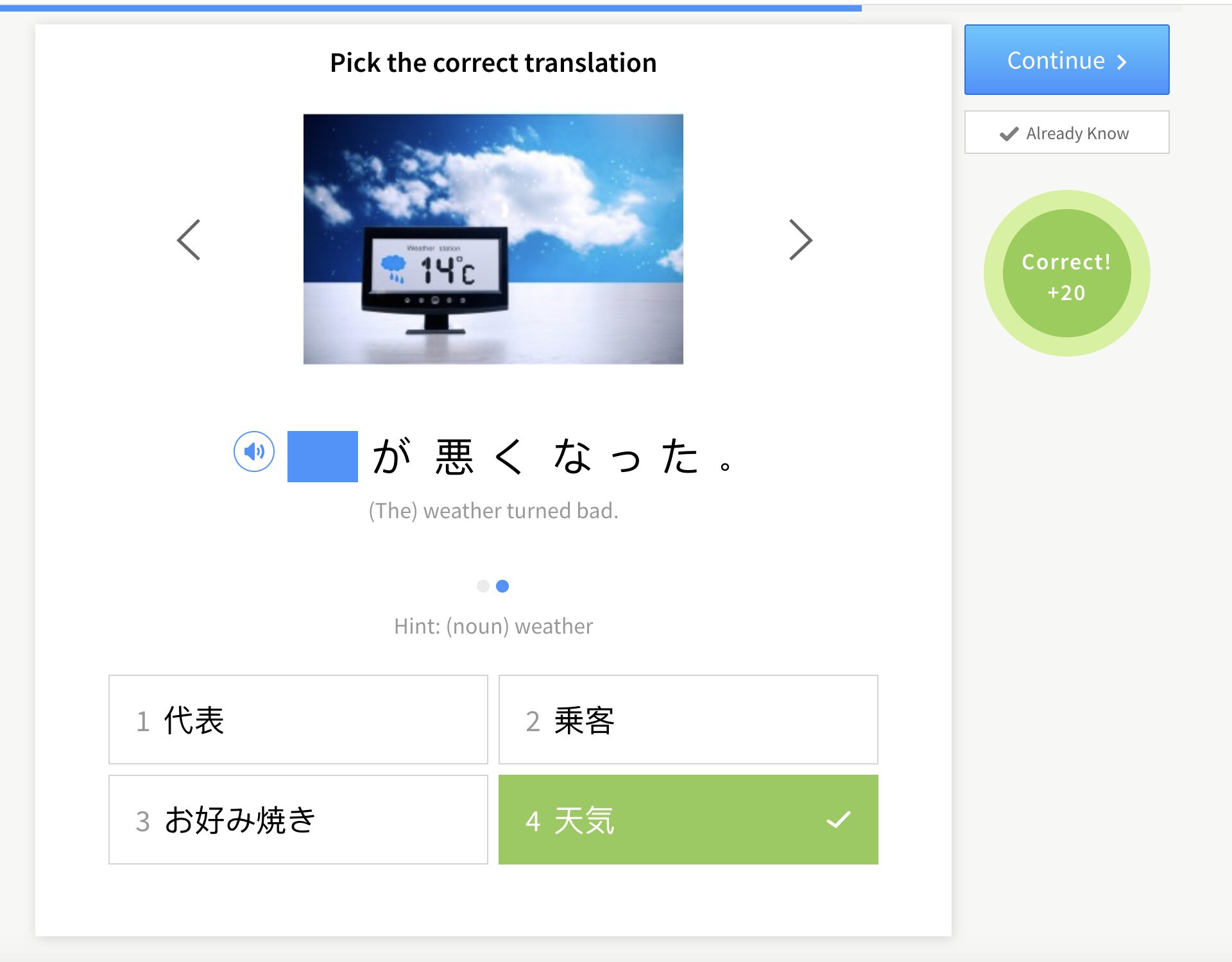Contents
- 1. There’s very little evidence of Japanese prehistory
- 2. There are other countries outside of Japan where Japanese is spoken
- 3. While many Asian languages are tonal, Japanese is not
- 4. However, Japanese does have a pitch accent
- 5. Japanese is one of the most fast-paced spoken languages in the world
- 6. But it also has the lowest amount of information density per second
- 7. Katakana can trace its origins to 10th century Buddhism
- 8. Katakana was much more difficult (and less inclusive) back in the day
- 9. Katakana played a vital role in the Japanese military
- 10. Women helped develop hiragana
- 11. “The Tale of Genji” ( 源氏物語 or げんじものがたり) was (supposedly) written almost entirely in hiragana
- 12. There are two ways to put hiragana in order
- 13. You should know about 連濁 (れんだく) — rendaku
- 14. Despite popular belief, Japanese has no genetic relation to Chinese
- 15. ローマ字 (ローマじ) — Romaji, a.k.a. the romanization of Japanese words, has Christian roots
- 16. Some Portuguese words have made their way into Japanese
- 17. The first Japanese-English dictionary to feature romaji was published in the 19th century
- 18. There are between 40,000-50,000 kanji characters in all
- 19. Japanese has several grammatical features that may seem strange to non-Japanese
- 20. Japanese is the 13th most commonly spoken language in the entire world
- 21. Japanese has its own sign language
- Bonus fact: English is the only foreign language taught in Japanese middle schools
- And One More Thing…
21 Surprising Facts About the Japanese Language

When you’re studying Japanese, it’s important to have a 休憩 (きゅうけい) — break once in a while. So instead of teaching you 日本語 (にほんご), we’ll go into all about it instead.
Check out these super interesting and unique facts about the Japanese language that you probably didn’t know.
Download: This blog post is available as a convenient and portable PDF that you can take anywhere. Click here to get a copy. (Download)
1. There’s very little evidence of Japanese prehistory
Many historians believe that Old Japanese and 琉球語派 (りゅうきゅうごは) — Ryukyuan languages, the indigenous dialects of the Ryukyu islands off mainland Japan, were brought in by travelers from Asia and nearby Pacific Islands during the 弥生時代 (やよいじだい) — Yayoi period around 200 BC.
Unfortunately, there’s little to no evidence to support this.
We just don’t know very much about Japan during the Yayoi period at all. Anthropologists have deduced that the earliest recorded text that contains writing similar to 漢字 (かんじ ) — kanji wasn’t found until around the 8th century.
How the language developed before that is truly a mystery!
2. There are other countries outside of Japan where Japanese is spoken
Of course, Japanese is the de facto language of Japan, and it’s also the only place where Japanese is the official language.
However, that doesn’t mean Japan is the only place where the language is spoken—and no, I’m not just talking about people learning the language (like you and me).
In fact, Japanese is recognized as a minority language in the Republic of Palau, where the island state of Angaur speaks primarily Japanese. It’s also spoken in places that historically had a large influx of immigrants from Japan, such as the United States where there are approximately 418,840 Japanese residents as of 2022.
3. While many Asian languages are tonal, Japanese is not
A “tonal” language uses less distinct syllables and unique words, and instead differentiates between words using inflections.
Japanese isn’t a tonal language.
This is actually pretty odd, since many East and Southeast Asian languages are tonal in nature. Mandarin and Cantonese Chinese, Vietnamese and Thai, for instance, all rely on tone to convey meaning. Considering its location, it’s interesting that Japan didn’t adopt a similar phonology.
For Japanese learners, especially those that grew up speaking a Latin or Germanic language, this is a welcome relief. Tones can be very difficult for some learners to get used to, after all.
4. However, Japanese does have a pitch accent
Like all languages, though, Japanese does have a certain rhythm and cadence to its words and sentences. Much of this is accounted for by what linguists call “pitch accent.” It’s like in English where you pronounce “certain” as CER-tain and not cer-TAIN.
All of the Japanese dialects, including the standard Japanese you’re probably studying, have their own distinctive pitch patterns. The best way to learn the unique music of the Japanese language is by listening to authentic speech on language learning platforms like FluentU.
FluentU takes authentic videos—like music videos, movie trailers, news and inspiring talks—and turns them into personalized language learning lessons.
You can try FluentU for free for 2 weeks. Check out the website or download the iOS app or Android app.
P.S. Click here to take advantage of our current sale! (Expires at the end of this month.)

5. Japanese is one of the most fast-paced spoken languages in the world
This is, of course, a bit hard to measure.
Speakers of any language have their own dialects, accents and personalities that affect how quickly they speak. (We all have that one friend, am I right?)
In 2011, a group of French linguists conducted a study where they attempted to measure the average speed of some languages around the world.
Interestingly enough, Japan has a spoken syllable rate of nearly eight syllables per second. That beats out Spanish, French and Italian.
6. But it also has the lowest amount of information density per second
According to the same study above, Japanese also has the lowest amount of information density per second.
What that means is, while you can say a lot of stuff in Japanese, you also don’t give a lot of information. This isn’t too surprising when you think about it—it takes almost all eight syllables just to say “not.”
In contrast, they found that Vietnamese, Mandarin Chinese and English had the highest rates of information shared per second while maintaining some of the slowest spoken syllables per second. Languages are amazing, aren’t they?
7. Katakana can trace its origins to 10th century Buddhism
If you’re far enough along in your Japanese studies, you’ve probably already come across 片仮名 (かたかな) — katakana.
Considering that many katakana loanwords are from English, and that Japan didn’t come into contact with the English language until the 1600s, you’d think that it’s a relatively modern writing system.
In fact, as far back as 951 AD, katakana was already being used by Buddhist monks to annotate Chinese writing for Japanese readers—sort of like how furigana is used for foreign and young readers today.
Over time, it became a way for Japanese officials to communicate with foreign traders and is used to this day to denote foreign or borrowed words (unless they come from China), onomatopoeia and foreign names.
8. Katakana was much more difficult (and less inclusive) back in the day
When it was originally conceived, katakana contained many different symbols to represent each syllable sound and was primarily used by men.
Today, the katakana system consists of 48 unique syllables and is used by everyone. Thank goodness for that!
9. Katakana played a vital role in the Japanese military
If the Western world had Morse code, Japan had katakana.
Katakana was heavily used to transmit coded messages during World War II, though it was used for that same purpose much earlier. In case you’re interested in the Japanese ciphers that the country utilized in the wars it fought throughout the modern period, here’s an article for you.
10. Women helped develop hiragana
Interestingly, 平仮名 (ひらがな) — hiragana, which is one of the first concepts Japanese learners study, owes its development to women.
During the 8th century, Chinese characters were used to represent Japanese sounds. However, this wasn’t a perfect system: not all Japanese sounds or words could be sufficiently expressed through a foreign alphabet.
To address this problem, noblewomen from the Heian court started putting together a writing system that not only helped to express these added nuances of the Japanese language, but also made written Japanese more accessible to the wider population. (At the time, only men had enough education to read Japanese texts using Chinese characters.)
This likely explains why characters with kunyomi or native Japanese readings are often differentiated by trailing hiragana characters or 送り仮名 ( おくりがな) — okurigana.
11. “The Tale of Genji” ( 源氏物語 or げんじものがたり) was (supposedly) written almost entirely in hiragana
Speaking of women and hiragana, “The Tale of Genji” penned by the noblewoman 紫式部 (むらさきしきぶ) was said to be written almost wholly in hiragana—or, if you’re going to use the old term for it, yamatokotoba or literally “Japan words.”
I say “supposedly,” because the original copy of the novel wasn’t able to survive to the present day, so we can’t really verify this claim.
12. There are two ways to put hiragana in order
If you’re studying hiragana using charts, chances are you’re looking at a 五十音 (ごじゅうおん) — gojuon (lit. “fifty sounds”) chart. It’s where the kana characters are arranged such that the vowels comprise one row/column and the consonants comprise the other row/column.
But there’s another, more old-fashioned (and, I daresay, more challenging) way to learn hiragana and that is through the いろは (iroha) system. It’s essentially a poem where all of the hiragana characters (including archaic ones) appear exactly once. If learning through Japanese poems is more your style, go for it!
13. You should know about 連濁 (れんだく) — rendaku
I say you “should” know about rendaku, because it explains a lot of the more confusing aspects of the Japanese language.
Rendaku is a phenomenon unique to Japanese where, in a compound word consisting of at least two kanji, the first consonant in the second kanji changes its sound or becomes voiced.
A few simple examples of this are:
- 目 (め) — eye and 玉 (たま) — ball combine to form 目玉 (めだま) — eyeball.
- 花 (はな) — flower, and 火 (ひ) — fire, combine to form 花火 (はなび) — fireworks.
- 池 (いけ) — pond, and 田 (た) — rice field, combine to form 池田 (いけだ) — Ikeda, a common surname.
If you’re wondering about the general rules on using rendaku—well, it’s actually easier to list the instances where rendaku does not occur. Even then, there are exceptions, and the only way to master these is by constant immersion in the language.
14. Despite popular belief, Japanese has no genetic relation to Chinese
We’ve established that kanji is adopted from Chinese characters and used as a Japanese writing system. We also know that Japanese “borrows” quite a few phrases and words from Chinese.
The Japanese language as a whole, however, isn’t derived from the same language family as Chinese and has no genetic relation to it whatsoever.
In fact, Japanese is considered one of the most unique languages in the world with no direct derivative language that birthed it. Other such languages include Sumerian, Korean and many Native American languages.
15. ローマ字 (ローマじ) — Romaji, a.k.a. the romanization of Japanese words, has Christian roots
One would think romaji would have come about during trade relations and early interactions with European countries in the 16th century. But this isn’t the whole story.
Romaji was developed in the 1500s by a Japanese Catholic who wanted to help European missionaries evangelize and promote their Jesuit religion in Japan without having to learn the complex character systems of Japanese.
Later on, as more and more people began to visit Japan, romaji became refined as a tool to help non-Japanese learners verbally sound out Japanese characters.
16. Some Portuguese words have made their way into Japanese
Speaking of Christians, Portuguese missionaries were among the first Europeans to arrive on Japanese shores. It makes sense, therefore, that some of their words would get absorbed into and become a permanent part of the Japanese language.
Perhaps the most famous example is 天麩羅 (てんぷら), which is derived from the Portuguese word “tempero” (seasoning) and refers to the deep-frying technique that gives certain Japanese food their distinctively crunchy yet light texture. Heck, Wikipedia has an entire entry dedicated to these words!
17. The first Japanese-English dictionary to feature romaji was published in the 19th century
Although romaji was already used in Japan as early as the 16th century, it wasn’t until 1886 that the first Japanese-English dictionary using it would be published by a man named James Curtis Hepburn.
If his last name rings a bell, that’s because he lends his name to the concept of “Hepburn romanization.” He’s often credited for inventing it (as the name suggests), even though a Japanese organization called the 羅馬字会 ( ろーまじかい ) developed the system in 1885—a year before Hepburn’s dictionary was published.
18. There are between 40,000-50,000 kanji characters in all
Depending on who you ask, the Japanese language has either 40,000 or 50,000 kanji characters. 10,000 is a significant difference when you consider how difficult it is to master the recommended 2,000+ characters!
But hey, at least you can save yourself the headache of having to learn 38,000 to 48,000 more characters. Even native Japanese speakers don’t know them all, and knowing the 2,000 most common kanji is enough to help you get through a newspaper or subtitled TV show.
19. Japanese has several grammatical features that may seem strange to non-Japanese
The writing system is the most obvious difference between Japanese and many other languages. There’s also:
- The omission of pronouns. You may have learned that, in Japanese, there’s no need to say 私は (わたしは) — “I am” or “I” over and over again. As long as it’s clear from the context who the subject is, you can omit the pronoun in the succeeding sentences or statements.
- The lack of gendered pronouns. Unlike Romance languages, for example, Japanese doesn’t have an equivalent to “he” or “she.” However, there are certain words, expressions and contexts that can clue you in to the gender of the person/people being talked about.
- Sentence structure. In English, sentences generally follow the “subject-verb-object” order. In Japanese, it’s “subject-object-verb.”
Luckily, there are plenty of places where you can master Japanese grammar online, so take advantage of those!
20. Japanese is the 13th most commonly spoken language in the entire world
Around 125.4 million people speak Japanese. It’s the most space-concentrated of all the most-spoken languages, with a vast majority of its speakers living exclusively on the island of Japan.
This seems to be changing, however. People outside of Japan are becoming more and more interested in learning the language.
In fact, as of 2021, there are nearly 3.8 million Japanese learners around the world. That’s a huge jump from 1979, when there were only over 127,000 learners—a 30-fold increase in over four decades. People are more interested in Japanese culture and thus want to learn the language.
That’s why you, reader, are here, right?
21. Japanese has its own sign language
Of course, the Japanese language doesn’t just come in the form of spoken and written words.
Just as the U.S. has American Sign Language (ASL) so that deaf and hard-of-hearing individuals can communicate using hand gestures, Japan has Japanese Sign Language (JSL) or 日本手話 (にほんしゅわ).
Compared to ASL, JSL uses more mouthing and fingerspelling, and naturally follows the syntax and grammar of the Japanese language.
Even if you’re not likely to meet a Japanese person who cannot hear or hear very well, this is still a good thing to know!
Bonus fact: English is the only foreign language taught in Japanese middle schools
Okay, so this isn’t so much of a language fact as a cultural one, but we thought it was too interesting not to include.
While many language options are available in Japanese colleges, English is taught as a second language in Japanese middle and high schools and is a requirement for Japanese students.
Like English speakers learning Japanese, English is especially difficult to learn for the average Japanese student due to the vastly different grammar and writing systems.
Just a little reminder when you find yourself struggling: if you were able to master your own language, you can master Japanese, too!
Did you find a fact or two that surprised you on this list? Japanese is such a unique language with an even more unique history. If Japanese is the language you’ve chosen to learn, you’ve made a great choice!
Download: This blog post is available as a convenient and portable PDF that you can take anywhere. Click here to get a copy. (Download)
And One More Thing…
If you’re like me and prefer learning Japanese on your own time, from the comfort of your smart device, I’ve got something you’ll love.
With FluentU’s Chrome Extension, you can turn any YouTube or Netflix video with subtitles into an interactive language lesson. That means you can learn Japanese from real-world content, just as native speakers actually use it.
You can even import your favorite YouTube videos into your FluentU account. If you’re not sure where to start, check out our curated library of videos that are handpicked for beginners and intermediate learners, as you can see here:
FluentU brings native Japanese videos within reach. With interactive captions, you can hover over any word to see its meaning along with an image, audio pronunciation, and grammatical information.
Click on a word to see more examples where it's used in different contexts. Plus, you can add new words to your flaschards! For example, if I tap on 予約, this is what pops up:
Want to make sure you remember what you've learned? We’ve got you covered. Each video comes with exercises to review and reinforce key vocab. You’ll get extra practice with tricky words and be reminded when it’s time to review so nothing slips through the cracks.
The best part? FluentU tracks everything you’re learning and uses that to create a personalized experience just for you. Start using the FluentU website on your computer or tablet or, better yet, download our app from the App Store or Google Play.
Click here to take advantage of our current sale! (Expires at the end of this month.)











